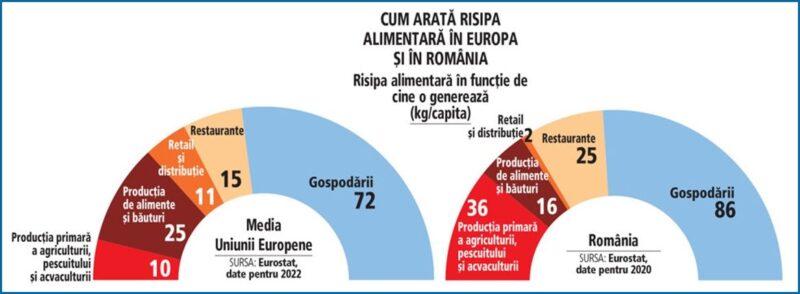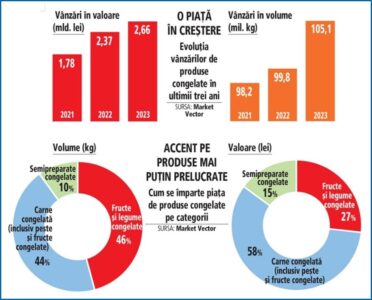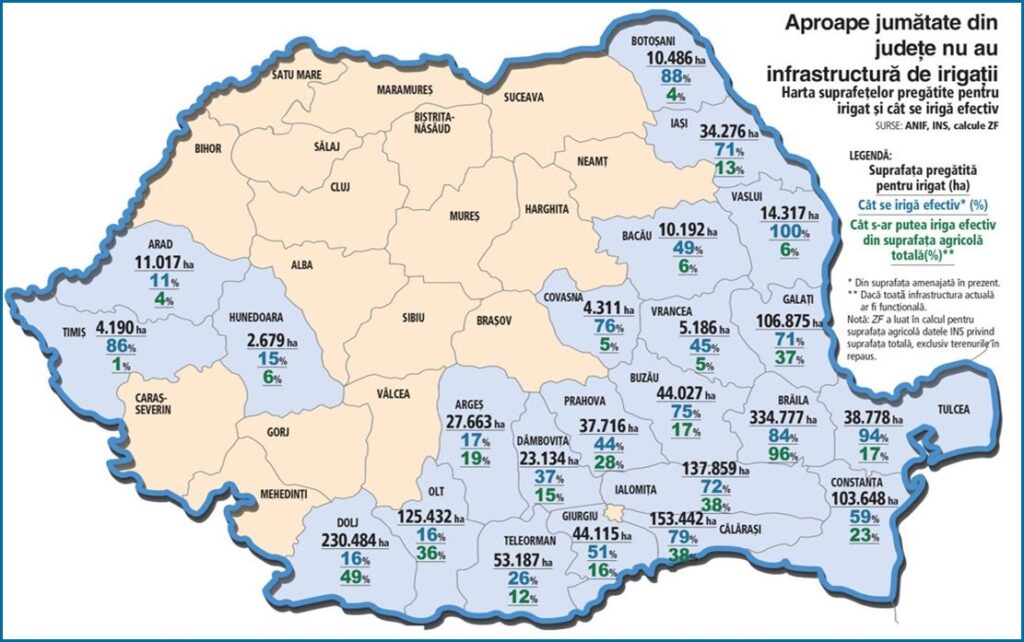The “restaurant” on the first floor of the building is increasing its sales. Ready-to-eat products, a market that has tripled over the past decade, continue to attract consumers. “The growth opportunities for this segment are great.”
Ready-to-eat meals, or meals that can only be reheated and consumed, saw a 5% increase in volume last year, after stagnating in 2023, according to retail audit data from NielsenIQ. At the same time, products such as salads, meatballs, sandwiches and hummus rose only 8% in price in 2024, compared with the 15% price increase of these products the year before, the same source said.
 How Romania’s food industry can grow. Food waste and loss, a business opportunity, especially for small entrepreneurs. How can food waste be used efficiently, for example in the form of compost, snacks or thermal insulation panels?
How Romania’s food industry can grow. Food waste and loss, a business opportunity, especially for small entrepreneurs. How can food waste be used efficiently, for example in the form of compost, snacks or thermal insulation panels?
According to the latest Eurostat data, Romania wastes about 166 kilograms per capita annually, higher than the European Union average of 132 kilograms per capita.
The product that is causing a furor in Romania; more and more Romanians are buying it to save time and solve the food problem quickly.
 Last year, each Romanian bought an average of 6 kilograms of frozen foods, whether meat, vegetables, fruits or semi-finished products. This market segment has experienced a positive development in recent years, in line with general food consumption.
Last year, each Romanian bought an average of 6 kilograms of frozen foods, whether meat, vegetables, fruits or semi-finished products. This market segment has experienced a positive development in recent years, in line with general food consumption.
How can we grow Romania’s food industry? An X-ray of the fish market, a category looking for more consumption: Romania is at the bottom of the ranking of largest fish producers in Europe, leaving us with an annual deficit of 300 million euros.
Fish consumption in Romania is almost three times lower than the European average. This makes the sector less attractive than meat or semi-finished products. This, combined with a lack of organization in the sector, leads you to find fish on the market from Bulgaria rather than Romania. 
How the Romanian food industry can grow. The food industry is drifting without a clear strategy. In the land of “support” and “we will invest,” an industry with at least twice the potential is going nowhere. What should a real plan look like?”
Romania will ensure its food security and become a major player in European and international trade in agricultural products and foodstuffs.” This is one of the objectives of a 2020-2030 strategy developed by the Ministry of Agriculture, which can be found on the institution’s website.
 How Romania’s food industry can grow. Germany, the Netherlands and France dominate food exports to the EU. Is the Middle East an opportunity for Romania? “As of 2020, we have no export strategy.”
How Romania’s food industry can grow. Germany, the Netherlands and France dominate food exports to the EU. Is the Middle East an opportunity for Romania? “As of 2020, we have no export strategy.”
Romania is not among the “elite” of food exporters in the European Union, but it manages to maintain its agri-food trade balance through grain exports.
How we grow Romania’s food industry. The reality behind the numbers in a year of record temperatures: nearly half of the provinces do not have irrigation infrastructure, and in others it does not even cover a quarter of needs. “Without irrigation, agriculture is at risk,” he said.
The year 2024 brought drought, but also prolonged record temperatures, making Romania’s production of cereals, vegetables, potatoes, as well as fodder, once again dependent on the weather and many farmers once again waiting for compensation from the state. This is because almost 20 districts of the country lack irrigation infrastructure and in many areas where it does function, it is not sufficient to cover all farms.
How can we grow the Romanian food industry or when can we finally see Romania as a driving force in the European food industry? We already see holdings, but we need to build integrated companies to push the boundaries. 
The Romanian food industry is taking tentative steps toward new horizons, as evidenced by several local companies that have established holdings and are looking to conquer new markets. The best example in the region is Poland, which today has a food industry that generates four times as much revenue as the Romanian one, with twice as many employees.
